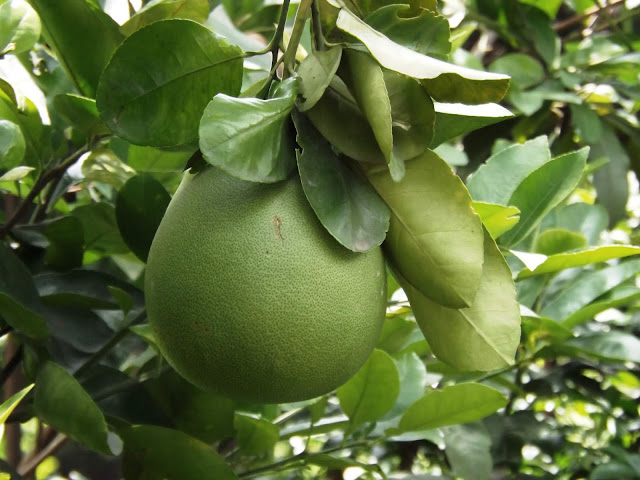Jambura or Pomelo, Citrus grandis
Jambura or Pomelo (Citrus grandis, family: Rutaceae) a small tree with branches, attaining a height of 10-12 m. The bark of the leafy and much branching tree is grey. It is originated probably in Thailand or Malaysia. It is found in the Southeast Asia nowadays. It is planted as homestead tree in rural areas of Bangladesh.
Other names: Batabi lebu, Jamir.
Leaves are deep green, elliptical-ovate, 8-15 cm long and 6-10 cm wide, slightly dented. Petiole has stipules. And by this characteristic the plant can be identified easily. Like all other members of citrus family, the sweet scent from the leaves is available.
Flowers are bright white, with 5 petals. They are sweet-scented. Where the flower blooms, the whole premise is filled with the honey scent. Numerous stamens surround pistil in the middle of the flower. It flowers in summer and produces fruit in rainy season.
The juicy fruit is very big, 12-25 cm in diameter, almost a size of football, weighing 1-2 kg. The rural boys play football with this fruit. When raw it is green, and yellow when ripe. The pulp is whitish, reddish or yellowish. It tastes quite sour, slightly sweet too. In a single tree, hundred of fruits can be found together!
The fruit contains a lot of vitamin C and prevent many diseases. Ripe fruits contain a large amount of pectin. So delicious jam, jelly, pickles are made from the fruits. The plant is propagated by seeds or air-layering.
Jambura is a iconic fruit of rainy season in Bangladesh. By the by, it is the largest fruit among the Citrus family.






Comments
Post a Comment